Scania – Automatic machine protection
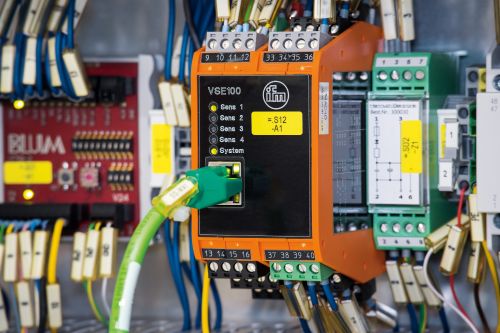
Processes the vibration signals from up to four sensors: the VSE100 evaluation unit
Vibration monitoring protects machine tools
Sensor technology is used to prevent unplanned production downtime. It constantly monitors the condition of machines and installations. If any limit values are exceeded, the maintenance staff will receive an automatic message or, in critical situations, the machine will even be stopped automatically to avoid any damage.
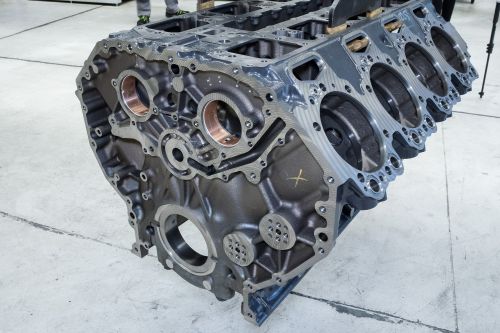
Powerful V8 engine block from Scania
Diagnostics explained using the example of a machine tool
Scania uses countless machine tools. It seems as if the milling heads were cutting through butter when they work their way through metal blocks while lathe chisels are creating shafts to the nearest millimetre and drills are accurately placing boreholes. All process steps are fully automated and carried out by computer-controlled lathes and milling machines. They create moulds for cylinder heads or shafts for engines in the twinkling of an eye.
To meet the high quality standards, machine tools must guarantee flawless and trouble-free workpiece machining. The high machining speed and the great process forces require quickly responding diagnostic systems that will immediately detect any damage to the tool or any collision in the machining process, so that it will be stopped instantly to prevent damage to the machine or the workpiece. Permanent vibration diagnostics has proven to be the ideal solution to reduce damage to a minimum.
Tiny fault, dramatic consequences
You can hardly imagine how great the process forces actually are when you see how easily the milling heads cut through the material with extreme rotational speeds. However, the tools are in fact subjected to extreme mechanical stress.
Even if their quality is at its best, no operator will be able to prevent that tools will break while they are in use. Even a tiny mechanical defect may have serious consequences if it occurs during the machining process. A broken tooth of a milling head, for example, can damage the workpiece and make it useless. When this happens to a complex workpiece, such as an engine block, the damage may become very expensive. Not only would the expensive workpiece become useless, but the required quantity could no longer be produced. The production process would be severely disrupted.
Unusual vibration indicates tool failure
This is why Scania provide their tool machines with an automatic fault detection system. The centrepiece of this system is a highly sensitive and extremely reliable vibration sensor from the sensor specialist ifm electronic.
"We monitor the vibration on the motor spindle, so that we can replace it in time before it breaks. What is more, the diagnostic software shows us the condition of the spindles and whether we need to adapt any process parameters", says Robert Bergkvist.
Thanks to the sensor data, the process efficiency can be increased to a maximum without the risk of critical machine conditions like a lathe chisel being driven too fast into the material.
This is where ifm's compact VSA vibration sensor joins in to help. It is firmly screwed into a borehole in the spindle head housing. There, it continuously detects the vibration characteristics during the machining process. The micro-mechanical accelerometer is so sensitive that it will detect even the slightest unbalance caused by a missing tooth on a milling head that itself only has the size of a millimetre. Changes in the cutting forces that may, for example, be caused by a blunt drill or too much swarf will be detected and reported on account of the changed vibration characteristics.
Individual tolerance limits can be assigned to teach tool, for example, warning and a switch-off thresholds. In case of the latter, the rotating tool spindle will be stopped via the command "stop spindle advance", so that the head can be removed from the workpiece. This reliably prevents that the expensive workpiece will be damaged.
Collision detection
Another function of vibration monitoring is collision detection. In series production, the entire milling, lathing and drilling process is usually tested by means of a simulation. Program-related collisions between the tool and the workpiece will be detected reliably and considered in the programming. In particular when fabricating individual components, programming flaws may lead to collisions between the tool and the workpiece or machine parts. In this case, the machine will be stopped as quickly as possible to minimise the damage to the machine and the workpiece.
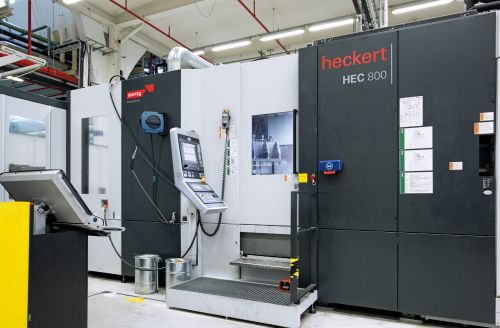
5-axis machine tool to lathe, drill and mill large metal blocks
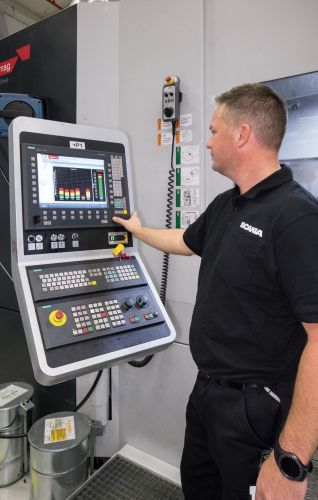
Robert Bergkvist checking the sensor data: "The diagnostic software shows us the condition of the spindles and whether we need to adapt any process parameters."
Spindle monitoring
Another protective function offered by vibration diagnostics is spindle condition monitoring. The vibration characteristics of the rolling bearing element are measured in a reference run and saved as "good value". If the bearings in the complex spindle mechanics are worn, this will be detected due to unusual vibration characteristics. If configurable tolerances are exceeded, an error message will be given. This guarantees permanent condition monitoring offering the operator additional safety.
How does vibration diagnostics work?
ifm's VSA vibration sensor is a micro-mechanical accelerometer. It continuously detects the vibration on non-rotating machine surfaces.
It is connected to the corresponding VSE evaluation unit. The evaluation unit evaluates the sensor signals of up to four vibration sensors and sends them directly to the machine control system. This ensures easy and stable integration.
Limit values for vibration and collision detection can be stored in the machine controller for each tool. To determine them in advance, a program cycle is carried out in the teach mode. Separate vibration data will be stored in the controller and provided with adjustable tolerance values. Individual limit value setting is possible down to each cut.
Exceeded tolerance values during the machining process are interpreted as a fault and will, depending on amplitude of the vibration, lead to a warning message or even stop the machining process.
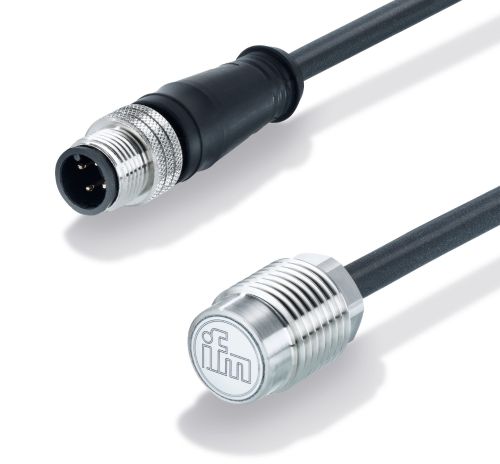
Micro-mechanical VSA accelerometer for screw mounting in the housing wall of rotating drives.
Conclusion
Tool breakage, collision or bearing damage: process monitoring based on vibration diagnostics cannot prevent them. However, by stopping the machine, the damage will not get worse while additional consequential damage to the workpiece and the machine will be effectively prevented. Permanent vibration diagnostics even detects imminent problems and will notify the maintenance staff with a warning message. This ensures efficient machine capacity utilisation and maximum machine protection.